Saturday Shoutout / Drop Off Panic
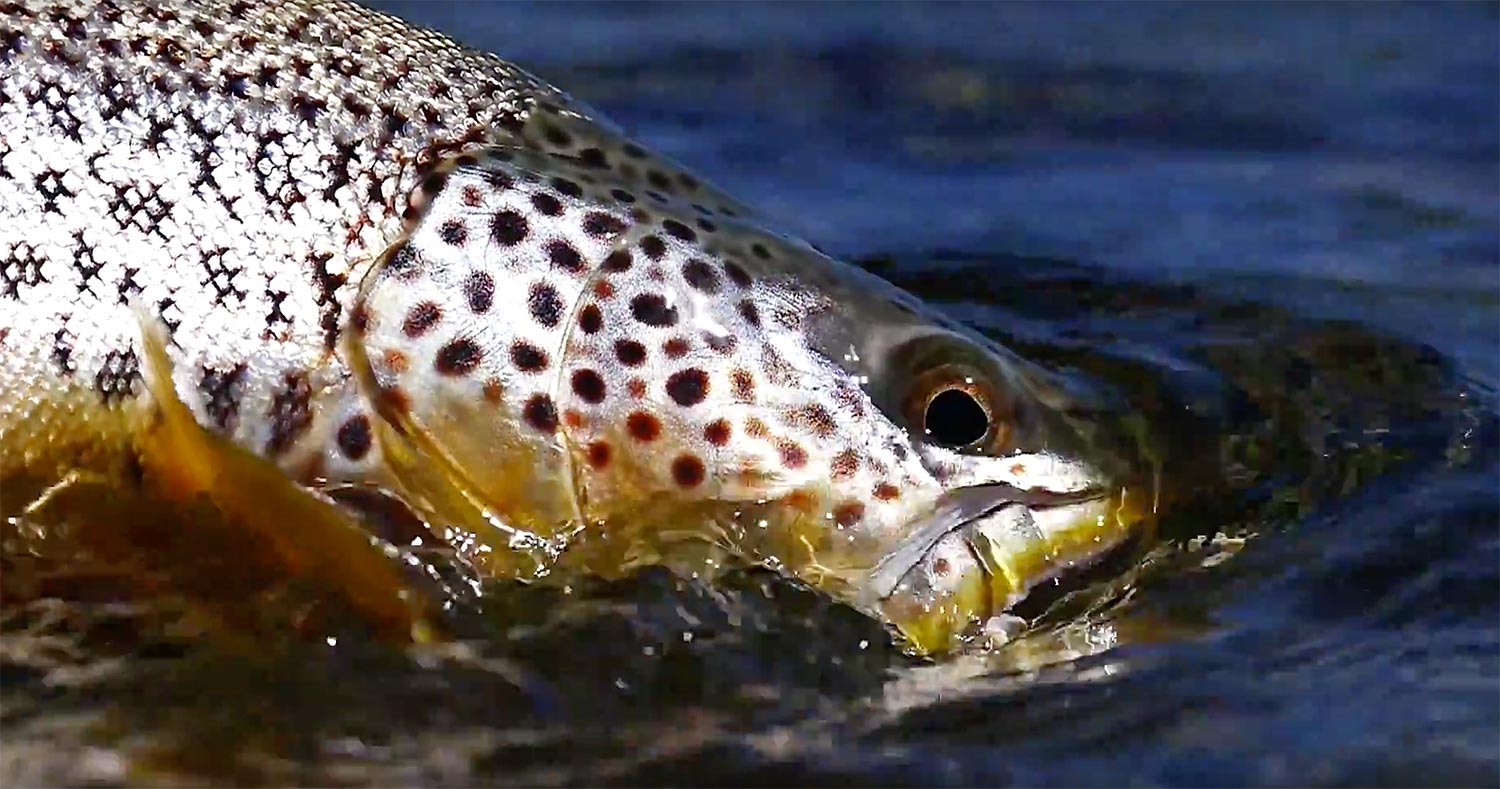
Cast, mend, drift…Panic ensues.
Every angler knows that drop-offs are trout magnets. Anywhere our friends are found, you can drift a dry fly through a riffle and out over deep water and expect something good to happen. Take that scenario to the Limay river in Argentina and the experience can be magical.
In this short film, Argentine film maker Pablo Saracco does just that. I had the pleasure of fishing with Pablo on the Limay a couple of years ago and I’ll never forget it. You can check out Pablo’s Youtube Channel for more great fishing action in Argentina.
JOIN ME ON THE LIMAY AND PARANA IN FEB OF 2008. CLICK HERE FOR DETAILS.
Read More »Fishing Dog Fridays: Trigger
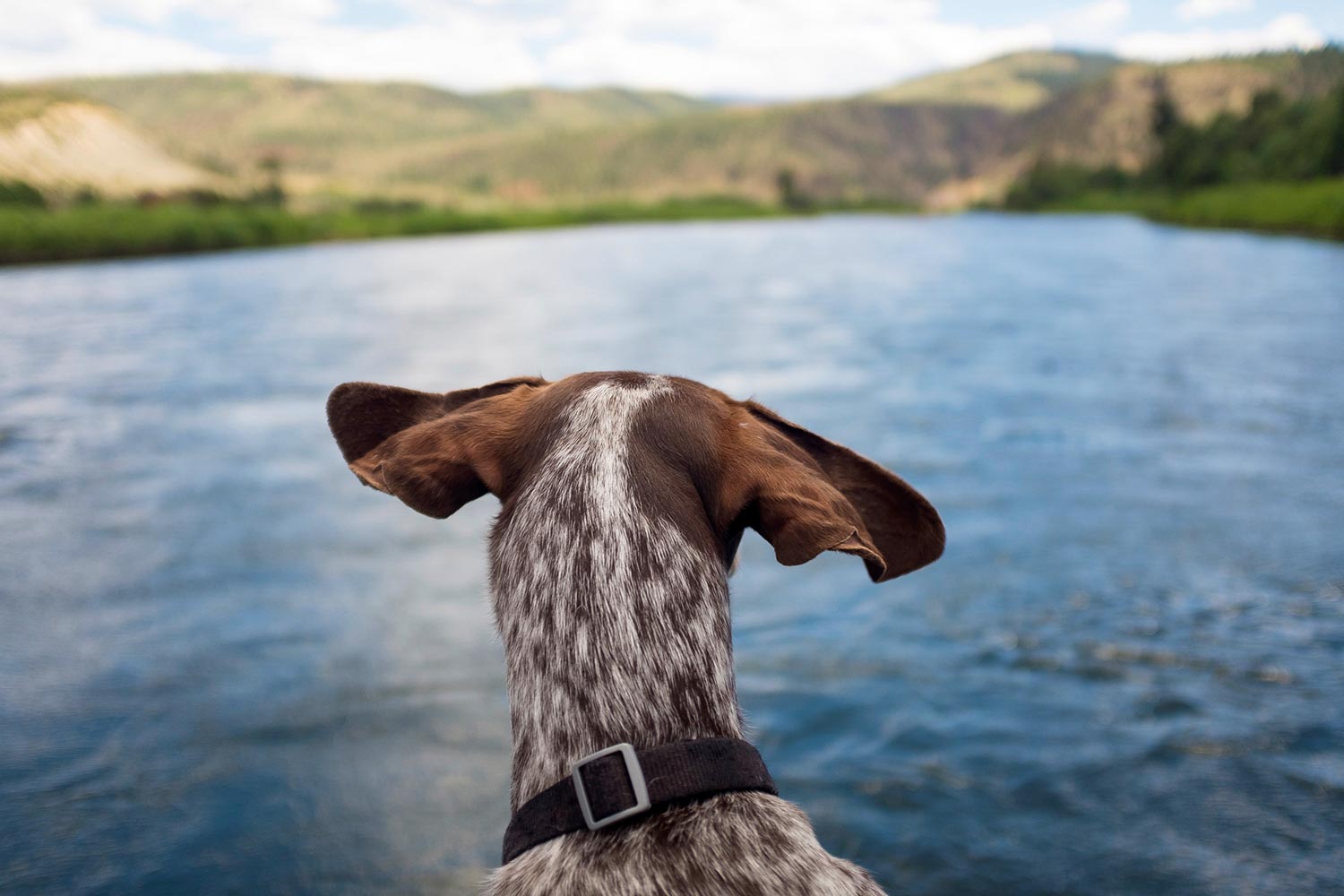
MEET TRIGGER, THE GERMAN SHORTHAIRED POINTER.
Those ears tell the story of a happy dog. Trigger calls Wheat Ridge, Colorado home. He started his career as a bird dog but these days he’s taken to the river with his dad, Josh Duplechian. Trigger is known along the mighty Colorado for taking a dip at the worst possible time. His special skill is his flawless impression of a pyramid anchor. His favorite treats include children socks, entire bags of M&M’s and chicken feed.
Trigger looks like a dog who has his priorities in order. I think we call all learn a lesson from him and let our ears fly once in a while. Thanks for sharing Josh!
Show your love for this awesome pooch in the comments section.
Read More »G&G / Fishpond Fishing Dog Photo Contest: Winner
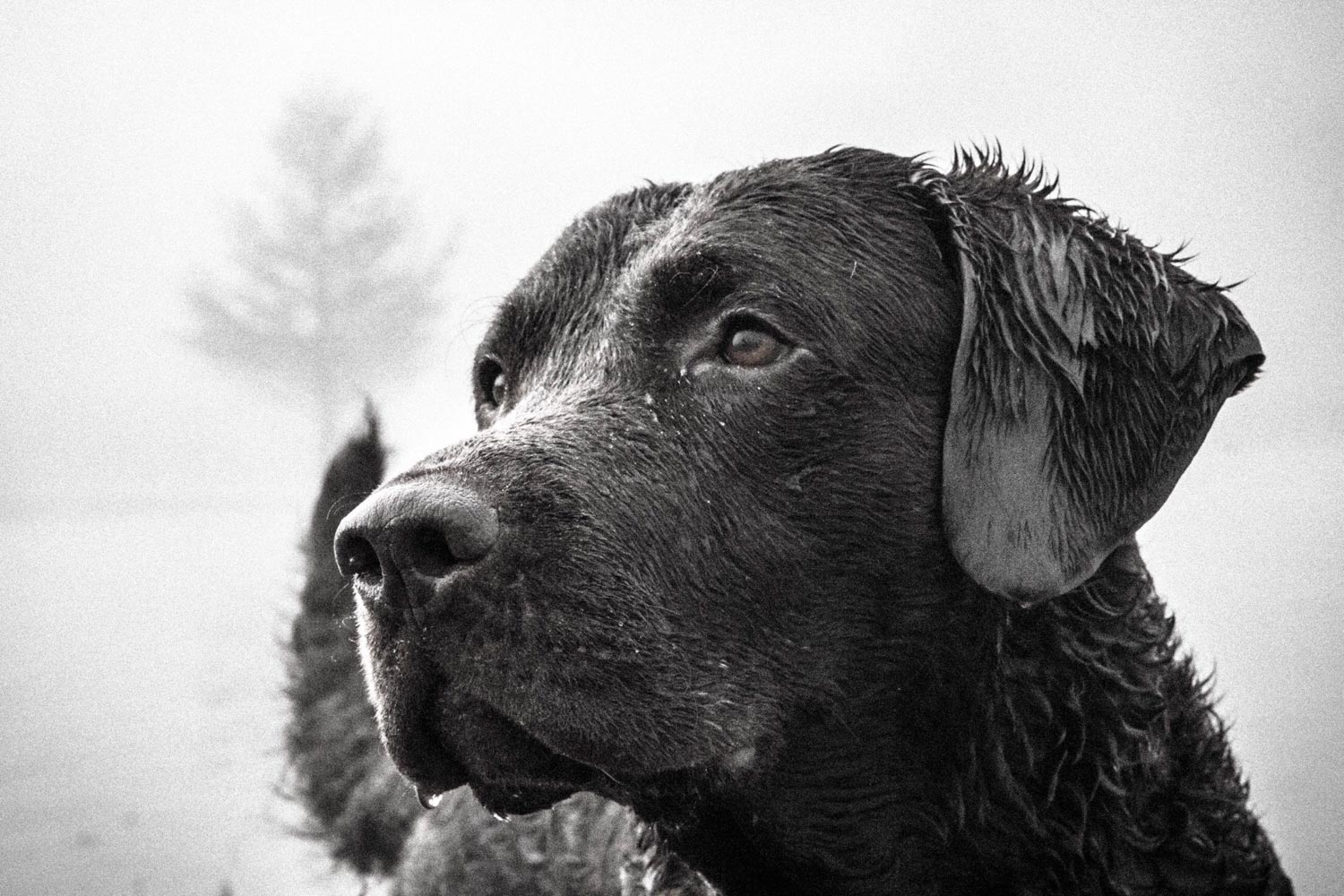
If that dog can’t find fish I’ll eat my trucker hat.
Congratulations to Ryan Forbus. This photo of his fishing buddy Mason, a Chesapeake Bay Retriever. That’s as regal a fishing dog as I’ve ever seen. For his good looks, Mason will enjoy a new collar, food and water bowls, and dog bed from Fishpond. Ryan has chosen XXX to receive a $250 donation from G&G and Fishpond.
We received a landslide of great dog photos for this contest. So many beautiful images it was hard to pick just one. Since it doesn’t seem fair to keep them to ourselves, over the next few weeks, we will be sharing some selections on Fridays. Stop by for Fishing Dog Fridays and get your dog fix from G&G.
Thanks to everyone who contributed and a big thanks to Fishpond for their generosity and support.
Read More »Who Says Short Rods Are For Small Streams
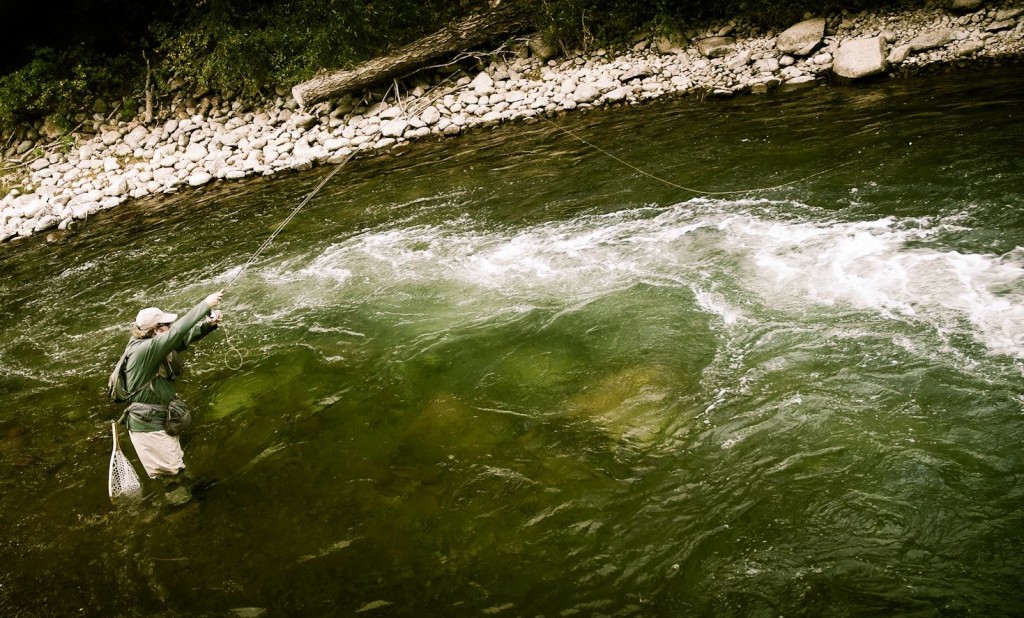
MY GOOD FRIEND DAVE GROSSMAN DECIDED TO TRADE IN HIS 9 FOOT BOAT RODS FOR 10 FOOTERS THIS YEAR.
So far, this fishing season he claims the extra foot of graphite has been working wonders for his clients on the water. Dave says, “I find that the ten foot fly rods make it much easier for my clients to mend their fly line, especially when they need to mend a lot of line. That translates into them consistently getting longer drag-free drifts. The longer rods shine when we need to high-stick across multiple currents, and they also allow my novice clients to squeak out a little more distance in their casts.”
After hearing those positive comments from Dave, I decided to give them a shot with my own clients, but I’d take it a step further. Instead of just incorporating them on float trips on the big rivers, I’d experiment using them on small to mid-size streams. The first trip out was a real eye opener and success with the ten foot fly rod on one of my 30′-40′ wide trout streams. To my amazement, the longer rod outperformed my standard 8 1/2-9 foot fly rods in almost all fishing scenarios in my clients hands. The only area the ten foot rod underperformed, were spots where the stream narrowed drastically or when it was really tight and cramped. The surprising thing about that, is it actually happened a lot less than I thought it would, and when it did, I’d just handed over the shorter rod I was carrying to my client. The key was positioning my angler in the correct spot, reminding him he had a longer rod in his hand, and then choosing the appropriate fly cast to present our flies.
I continued the experiment for several more guide trips, and it quickly became apparent, that all the fly fishing literature I’d previously read about matching the length of your rod to the size stream you were fishing, was actually just one way of looking at it. If there’s one thing I’ve learned over the years with fly fishing, it’s that there’s almost always multiple options (types of casts, types of rigs, types of gear, ect.) that are feasible for anglers to use when fishing any given situation. Most of the time we end up going with the status quo, which is the obvious and most popular method for the fly fishing situation at hand. Sometimes, however, if we’re not afraid to think outside of the box, and open to use an unorthodox approach, it has the potential to end up performing even better for us on the water.
BENEFITS THAT I NOTICED WITH MY CLIENTS WHEN I PUT A LONGER FLY ROD IN THEIR HANDS.
Ten foot fast action rods usually have a
Read More »It’s All In The Hips
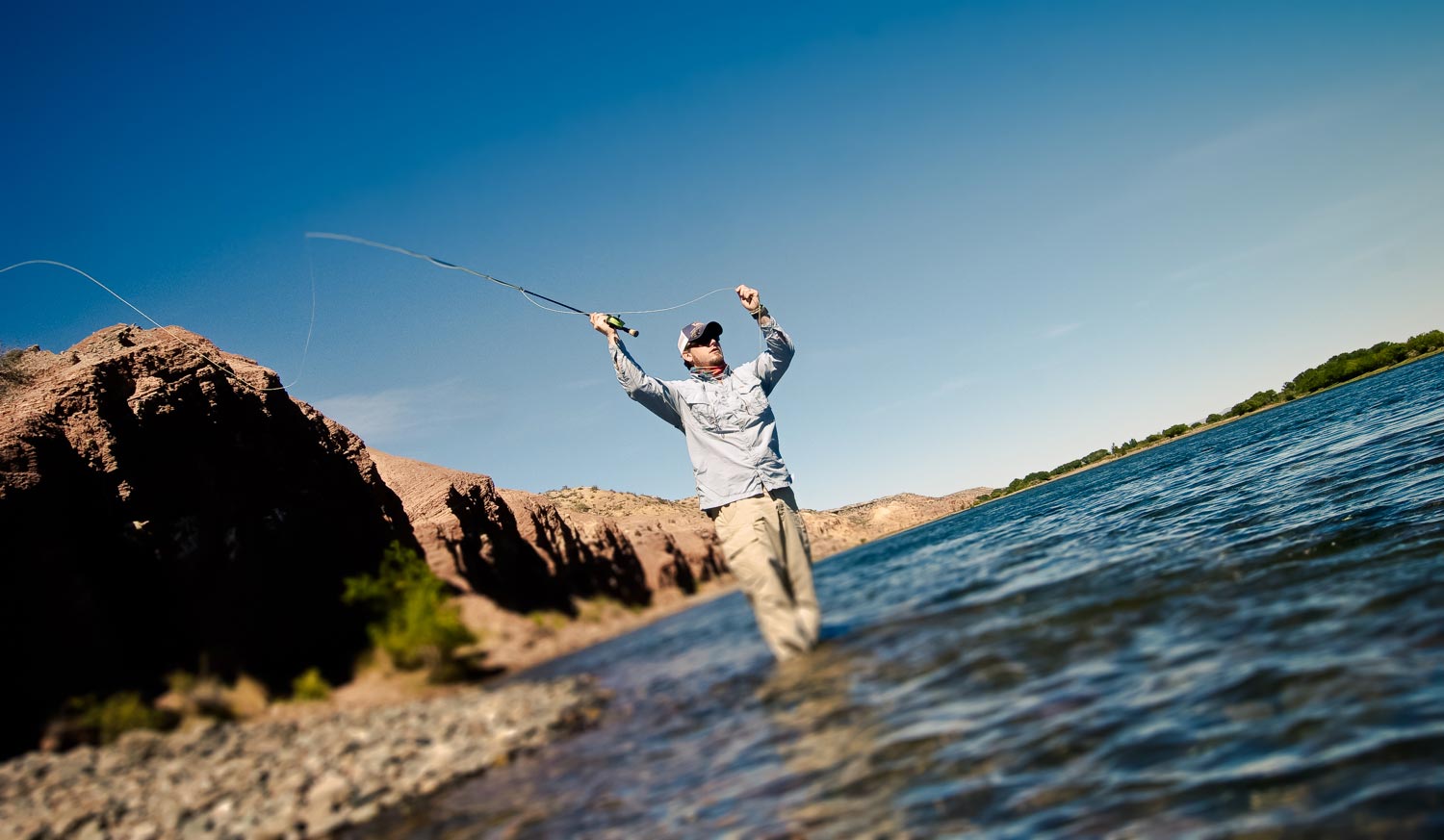
By Justin Pickett
Ever find yourself making the same poor presentation over, and over again? Or maybe it’s not that the cast is poor, but you are trying to work different areas of a run and your fly keeps landing near the same spot each time. Don’t drive yourself crazy, or give up on fishing the run. Getting frustrated is only going to lead to more mistakes. Sometimes the biggest gains are made with small adjustments, and in this case, there is a simple, effective way to fix this issue.
If you get into a situation where you keep making the same cast without intending to, all you need to do is turn your hips towards your intended target. This will naturally
Read More »Epic Argentina Double Header: Feb 3-13, 2018
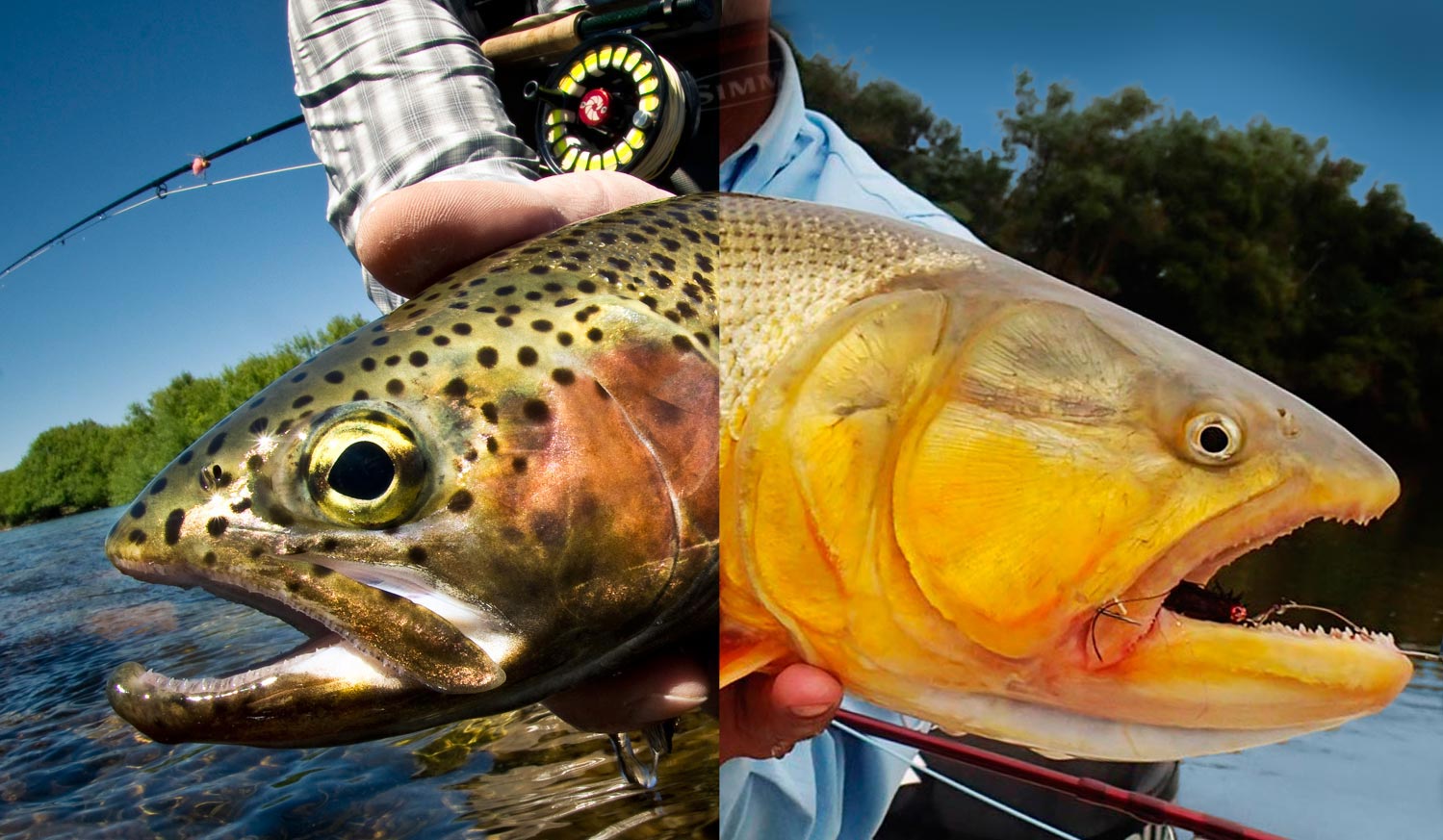
This is truly a once-in-a-lifetime fly fishing adventure.
I have fished some amazing places but none offer the diversity, solitude and hospitality of Argentina. Floating the storied rivers of Patagonia, you get the sense of what it would have been like to be the first angler to trout fish the American west. Big brown trout and rainbows crush #2 dry flies as condors soar overhead and llamas lounge on the bank. You look around but there isn’t another angler on the river. Your boat pulls into camp and you are greeted by a goat, roasting on a spit over an open fire. A lavish island tent camp with Christmas lights strung in the trees, a full bar and cases of Argentine wine. You spend the evening gazing at the Southern Cross hanging over the river, then drift off as your guides tell fantastic stories around the camp fire. You can’t make up this kind of stuff.
The Limay is known for its big browns. It’s very common to catch fish over 20 inches on dry flies. Anglers probe the depths with minnow patterns, finding brown trout in the twenty-pound range. The river flows clean and clear across beautiful dessert hills. Riffles pour into deep pools and trees shade undercut banks. If there are small trout in the river, I haven’t seen them.
But that’s only the start of this trip.
After 4 days floating the famous Limay “River of Monsters,” we travel to the north, to the upper Parana on the border with Paraguay. For the next four days we’ll chase viscous Golden Dorado, Pacu and Pirapita as howler monkeys taunt us from the jungle. At the Parana On The Fly Lodge we will
Read More »Sunday Classic / Winter Fly Fishing – Midges 101
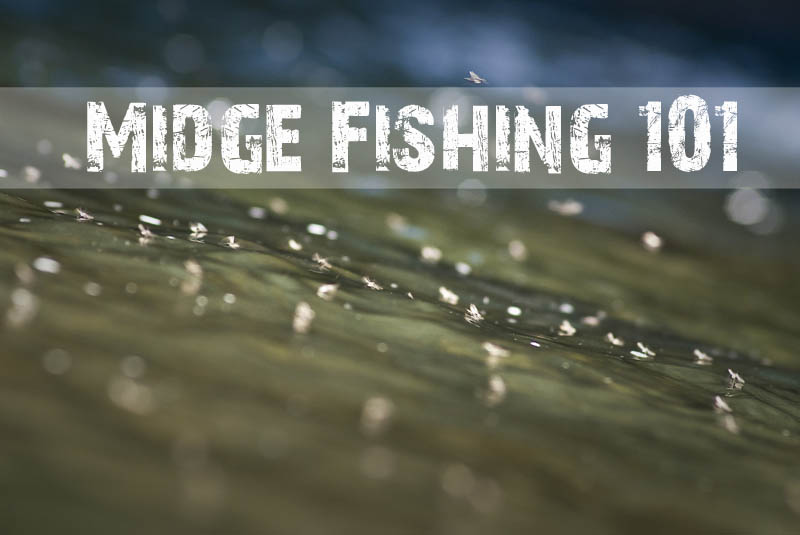
There’s no doubt there are times when big flies are the ticket for catching big fish. However, when you find yourself fly fishing on technical trout water and the bite is extremely tough, in many cases, it can provide you with big rewards if you put up those big gaudy fly patterns and break out your midge box. This especially holds true during the cold months, when you’re fly fishing to educated trout on technical spring creeks or high-pressured tailwaters. As fall passes, and we find ourselves smack in the middle of winter, most of our larger bug hatches will have long faded. This time of year, most trout will transition into consistently feeding on the most abundant food source that requires the least amount of energy to consume. On many of our trout waters during the winter, the most predominant aquatic bugs available for trout to eat, day in and day out, are midges. Now, it’s true that the colder the water, the lower a trout’s metabolism will be. It also is true, that the lower a trout’s metabolism is the less calories it is required to consume daily to survive. That’s because a lower metabolism burns off less calories. But what’s not true, and a very common misconception among trout anglers, is that all trout feed in less frequency when their metabolism is lower in the winter. What many anglers don’t realize is there’s a direct correlation between the feeding frequency of a trout and the food value of what it’s foraging on. For example, one could argue that big mature trout that primarily feed predatorily on large food sources (crayfish, sculpins, baitfish, mice, and juvinille trout), do feed in less frequency during the winter. However, that’s probably because the food sources they are targeting and foraging on … Continue reading
Read More »Saturday Shoutout / For Mom
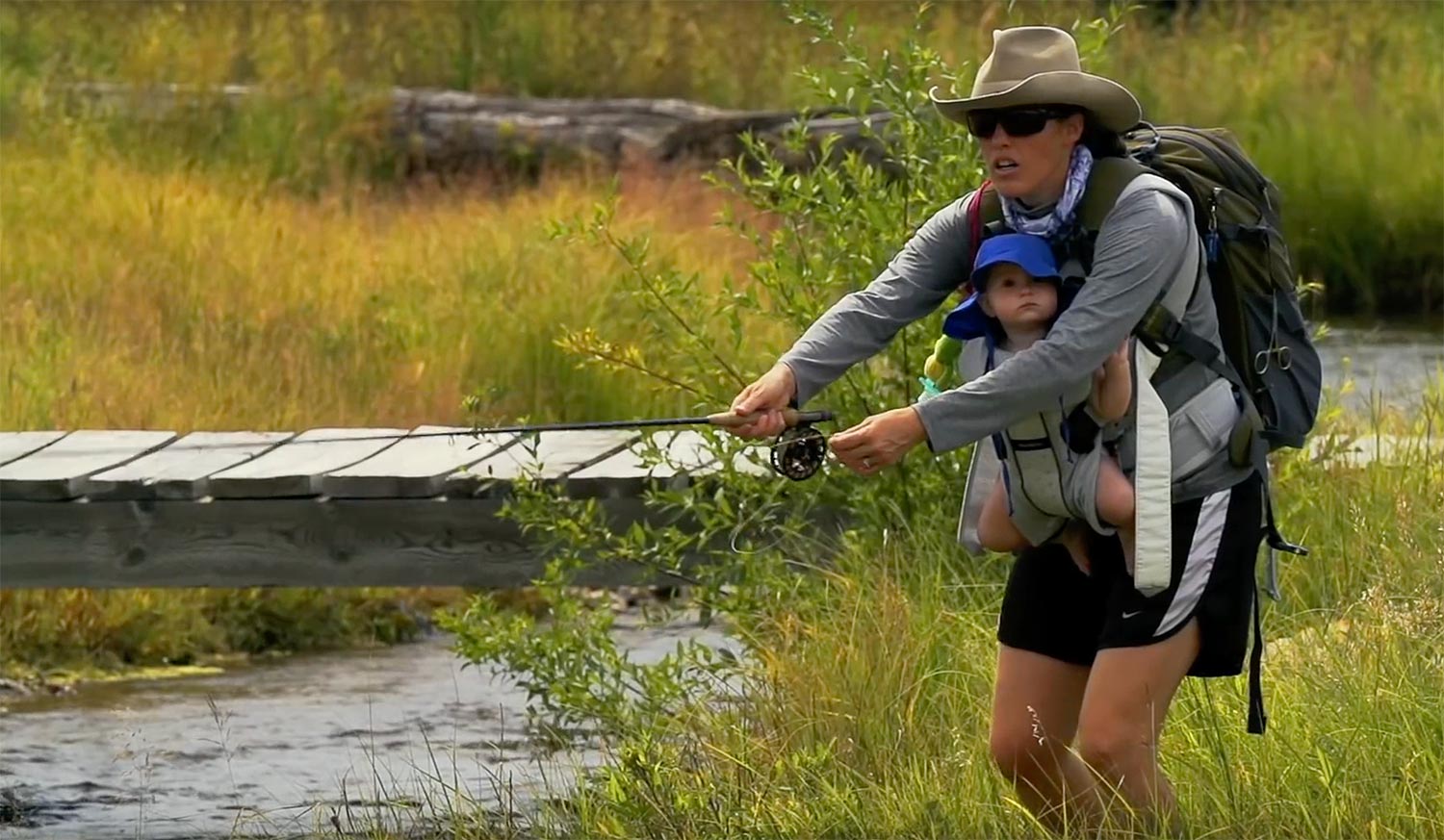
Tomorrow is mother’s Day.
Did you grow u fishing with Your Mother? Maybe it’s time to do it again.
FOR ALL YOU DO MOM, THANKS.
CHECK OUT THIS GREAT VIDEO FROM ORVIS.
Read More »4 Reasons Why Waterfall Plunge Pools Can Hold Big Fish
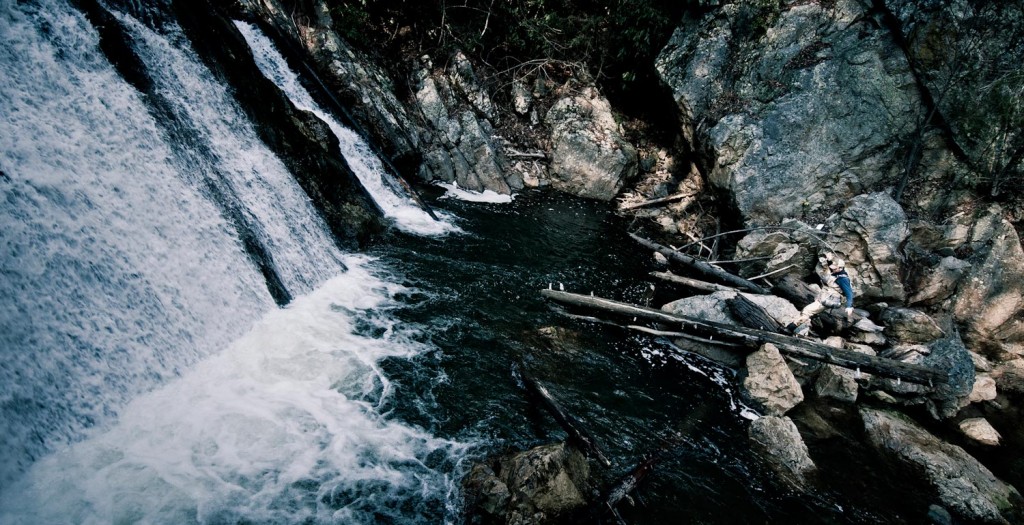
There are few things I love more than wade fishing a small stream and stumbling upon a steep vertical waterfall with a deep plunge pool.
Waterfalls this size are pretty rare on small streams, but if you’re lucky enough to locate one, you could very well find yourself hooked up to one of the biggest trout in the stream. Here’s four reasons why I feel waterfalls plunge pools are great places to look for big trophy trout on small streams.
1. Lots of food gets washed over a waterfall, especially during high flows.
Large amounts of food (tiny fish, aquatic insects, crustaceans and amphibians) are constantly being swept over the falls. In many cases, it provides a steady enough stream of food, that big fish aren’t required to leave the plunge pool to fulfill their daily food requirements.
2. There are usually lots of hiding places to make big fish feel safe and allow them to survive for long periods.
During high flows, quite often fallen trees can float over the falls and get snagged; creating perfect log jams for big trout to hide in. The whitewater at the foot of the waterfall provides
Taking The Bow, A Bonefish Beginning
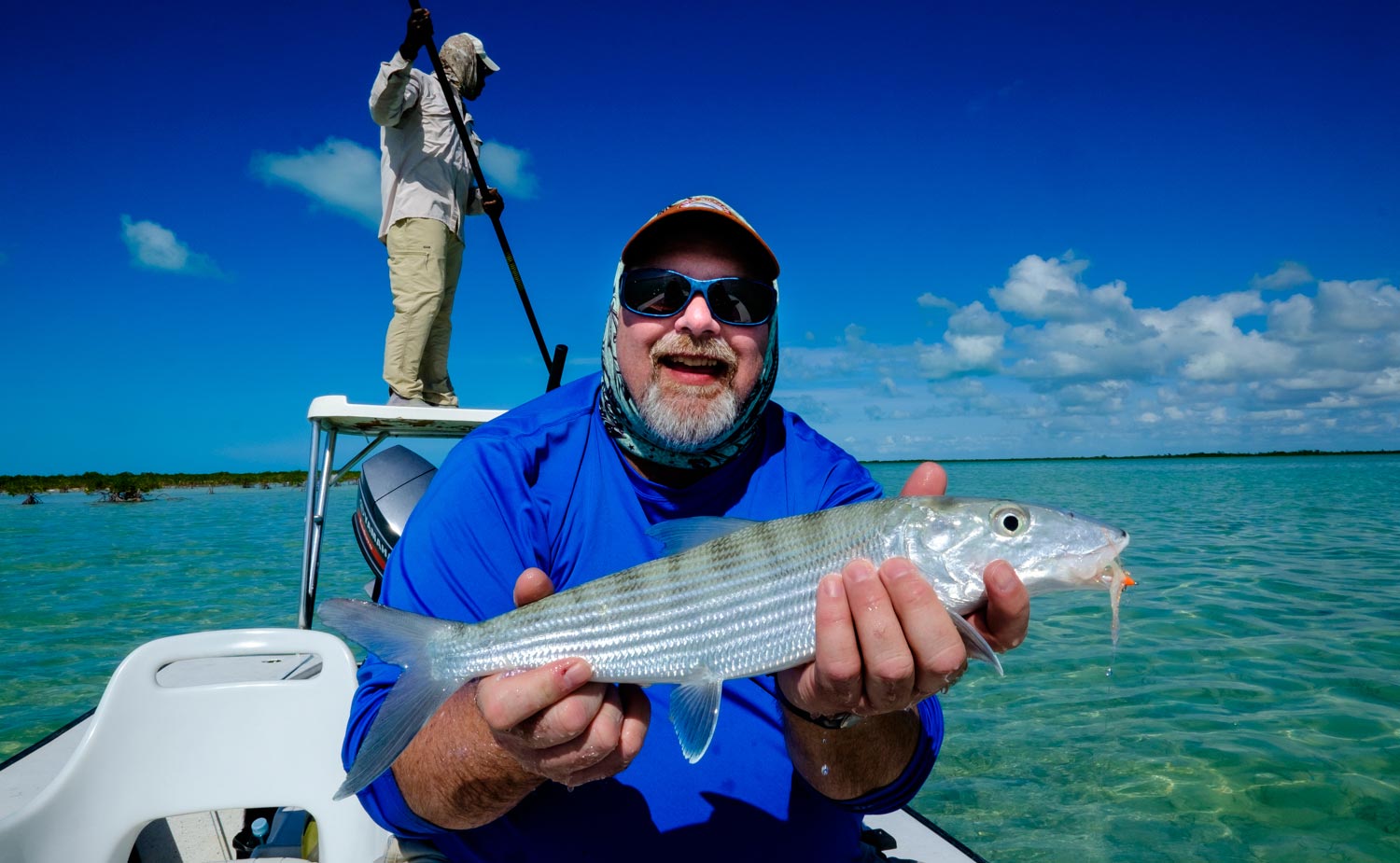
By Bob Boughman
So you want to try your hand at catching a bonefish or two? Never have done it? Stories of 80’ backhanded casts into 25 mph winds needing to hit a dime-sized target got you a bit concerned? Yeah me too, but not any more. Well I went, caught many more than two fish, and I doubt that I’ll ever have that cast in my quiver — didn’t need it. The goal was to immerse myself in all things tropical — being defined as warm weather and bonefish — escaping a northern Michigan winter, albeit only for a week.
The other goal was to learn as much as I could without coming across as a complete ass on the flats of South Andros in the Bahamas. As many, I grew up flyfishing in fresh water. The Rockies and Midwest hold fantastic fishing opportunities of their own, but obviously no saltwater opportunities (even though I still run in to the odd person who believes the Great Lakes are saltwater). I had fished a bit in Florida, but true flats fishing had eluded me and it was now time to figure out if this was a rabbit hole worth jumping into.
I’m a fan of Gink & Gasoline and during one evening session of catching up on their blog, I saw an ad for a bonefish school on South Andros Island. I clicked where it said to do so, read a bit and with some amount of trepidation, booked the trip. I knew nobody else and learned that there would be 10-12 anglers there, many who are returning and use this as annual event. As it turned out, I was the least experienced of the group. I was hoping that there would have been more like me, but everyone was returning or doing this because they enjoyed it…this would be fine.
The next least experienced angler was returning for his second week-long “school”. He made the trip from London with a duffel bag and a rod tube — a great guy with a knack for telling great stories. Truly enjoyed the time spent with him. One of the days I shared a boat with him, he caught a bonus barracuda that became dinner for our guide. There was also a pair of brothers who brought their sons which made for a fun father-son-brother-uncle-nephew-cousin mix. They had been coming to the “school” for many years and besides being accomplished anglers, were a great group of people. A theme is starting to develop regarding people who attended the “school” and fun.
The group was rounded out by two retired fishing buddies new to South Andros but experienced in salt, a young redfish guide looking to expand his experience with bonefish, and of course Louis. The stage was set for the ten anglers at bonefish camp…or “school”. Louis set it up so the four “single” anglers rotated boats daily which resulted in being paired with each person for two days of the six on the water. Every day was a bit of a different experience as the weather changed from sunshine to rain and back, and that the flats habitat on South Andros is expansive — to say the least. A person could fish the area for a lifetime and see new areas daily. It is easy to see why many consider South Andros as the go-to destination for bonefish.
Every day we saw and caught bonefish; everyday I gradually felt a bit more comfortable on the deck of the boat. I still had a hard time seeing fish unless they were against a light background. I attributed this to lack of experience…and just crappy eyesight. Thank goodness for
Read More »